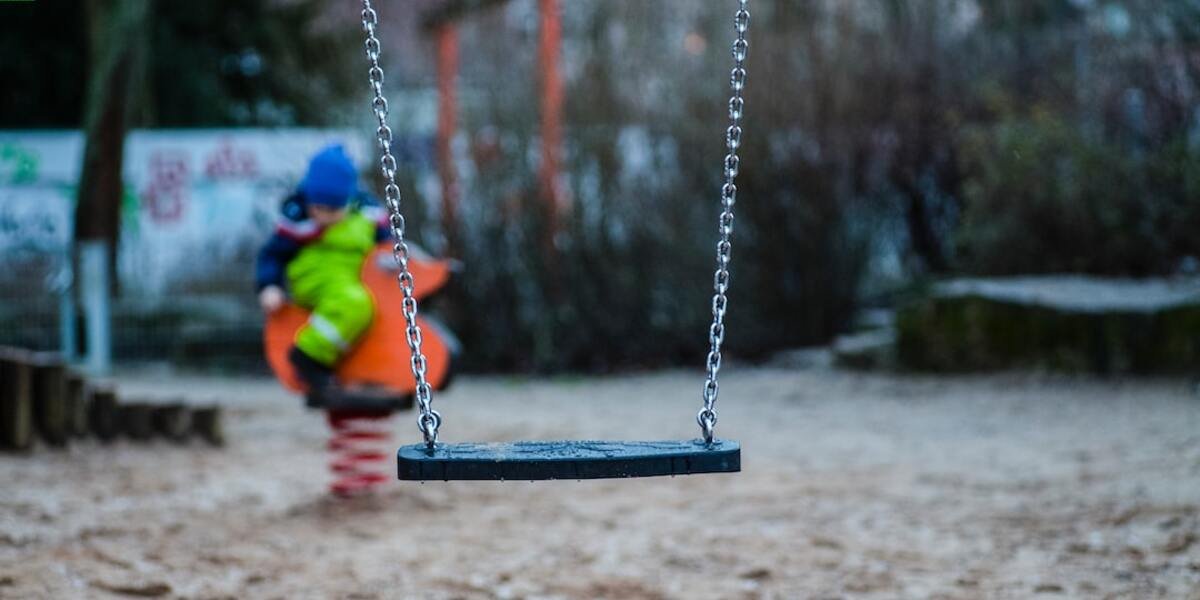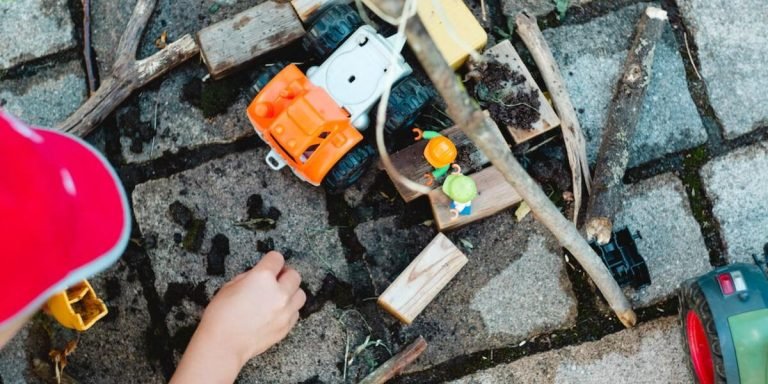Indoor Play for Toddlers: Creative Ideas to Keep them Engaged and Learning
Indoor play for toddlers is not just about keeping little feet busy; it’s an essential part of early childhood education. When outdoor activities aren’t feasible due to weather constraints or safety reasons, parents and educators often struggle with creative ideas that can aid the developmental process while ensuring their child stays engaged and entertained indoors.
This challenge requires innovative approaches as one-size-fits-all strategies rarely work when children are involved. Toddlers learn through exploration, experimentations, touch and feel – complemented by a surfeit of imagination! This post will delve into some thoughtfully curated indoor play concepts designed especially for these curious minds which contribute significantly towards enhancing cognitive skills, motor abilities and emotional development in a fun-filled setting.
Did you know?
Did you know that indoor play can accelerate language development in toddlers? According to a study by the University of Washington’s Institute for Learning and Brain Sciences, interactive and engaging play activities stimulate brain connections responsible for speech and social skills.
The Role of Indoor Play in Early Child Development
Indoor play is a cornerstone in the development of toddlers’ mental, physical and social skills. In 2023, it has assumed an even more considerable role because of evolving educational paradigms—one such being Technology Integration in Education which affects how parents and educators approach early childhood education. Indoor activities provide our young ones with their first-hand experiences interacting with various elements around them within a safe environment.
Notably, indoor play offers opportunities for children to interact with technology at an early stage—stimulating interest and fostering necessary technical competencies vital today’s world demands. From interactive digital games that teach basic number concepts or alphabet recognition on tablets to augmented reality toys that offer stimulating learning experiences—the implementation of these technologies revolutionize both what ‘play’ means as well as its purpose within toddlerhood.
Henceforward, through constructive indoor play involving technological integration coupled with traditional non-digital methods like building blocks or puzzles can boost cognitive development tremendously compared to either strategy alone — making way for a generation more adept at handling challenges posed by our rapidly digitizing world further down the line.
The Importance of Sensory Activities for Toddlers
In the early developmental stages, indoor play for toddlers plays a crucial role. This is particularly true when it comes to sensory activities. These are activities that stimulate your toddler’s senses: taste, touch, smell, sight and hearing.
Sensory activities significantly contribute to a child’s cognitive development in an exciting and interactive way, making learning meaningful for them. While it might seem like simple fun, much more is happening behind the scenes. Here’s why they hold so much importance:
1.Teaches Sensory Attributes: Activities such as playing with sand or water help children understand different textures – rough or smooth; hot or cold; wet or dry – increasing their vocabulary of descriptive words.
2.Builds Nerve Connections: Engaging multiple senses during play means more nerve connections within the brain’s neural pathways develop helping increase a child’s ability to complete complex tasks.
3.Support Motor Skills Development: Whether picking up small objects using fingers (fine motor skills) or hopping around on one foot (gross motor skills), these games enhance overall physical growth.
4.Fosters Social Interaction: Sharing toys reciprocally promotes interaction among kids teaching them patience, turn-taking etiquette and understanding emotions better.
5.Promotes Exploration & Scientific Thinking : Children get to explore how things work leading them towards discovery-based learning model just like real scientists!
6.Enhances Memory Functioning : The rich sensory experiences make memories stronger because they engage emotional responses making it easy for young minds retain information longer .
Cognitive Benefits from Interactive Play Environments
The cognitive development of a child is significantly influenced by the quality and type of play they are exposed to in their early years. Especially, engaging toddlers in interactive indoor play can work as an excellent tool for their cognitive growth.
Indoor play for toddlers serves multi-fold purposes; it entertains them while also subtly educating and developing life-skills. The setting creates countless opportunities to build problem-solving skills within children as they navigate through structures or engage with learning-based toys.
Digital advancements have introduced another layer into traditional indoor plays – technology integration. Technology-integrated games come across as attractive tools offering both entertainment value and educational lessons that enhance mental acuity among young minds.
Puzzles on tablets, coding games played online, or virtual reality storybooks challenge the toddler’s ability to think critically at this tender age itself which lays down groundwork for enhancing future analytical abilities.
Animated characters representing different shapes singing nursery rhymes teach association techniques effectively than rote memorization methods used earlier. With immediate feedback mechanisms incorporated into these digital platforms, kids can rectify mistakes thereon leading to improved memory retention scores – a significant leap from conventional teaching styles seen before 2023!
Moreover, interactive tech-aided environments foster creativity among youngsters affording enough freedom space where no idea is too wild! Digital painting apps allow free access range over colors & brushes but unlike physical paints don’t set any boundaries thus encouraging unrestrained imagination flow!
Designing Engaging Indoor Spaces for Toddler Learning
Designing engaging indoor spaces for toddlers can be a rewarding task, especially when it complements the process of early childhood education. In 2023, as technology continues to advance rapidly and permeate all aspects of life, educators and parents are looking towards integrating these advancements in their teaching techniques. One effective way is by incorporating them into children’s indoor play activities.
Indoor play for toddlers isn’t just about fun—it’s also an essential part of learning during those crucial first few years. Children absorb information at an extraordinary rate through interactive engagement with their environment, using toys and tools that stimulate different parts of their young brains. An excellent example would be leveraging educational apps on tablets or other smart devices which encourage hands-on interaction while enhancing cognitive skills simultaneously.
Moreover, creative digital platforms such as virtual reality (VR), augmented reality (AR) or even projects utilizing artificial intelligence bring fresh opportunities into the fold. A strategically arranged indoor space employing VR might allow kids to explore various natural habitats right from home safely! Tailored AR games could help youngsters grasp fundamental concepts like shapes or numbers via tangible visual aids without overwhelming them.
The key lies in astute integration rather than overpowering traditional methods – providing our young learners a balanced blend between technological immersion within safe boundaries alongside traditional learning techniques critical for overall growth.
Selecting Age-Appropriate Toys and Equipment
Selecting age-appropriate toys and equipment is paramount for enhancing indoor play for toddlers. It’s not just about filling the room with random objects, but strategically choosing items that promote learning while sparking joy and wonder in children.
Firstly, identify your child’s developmental stage. The materials used should challenge yet support their current abilities to aid cognitive progression. For example, choose puzzles that are increasingly complex or building blocks of different shapes and sizes to stimulate logical thinking.
Secondly, consider multi-purpose toys that evolve as per a child’s growing needs thereby promoting continued interest over time. An abacus doubling up as a color identification tool can serve both an 18-month-old toddler identifying colors and a three-year-old mastering counting – making it perfect indoor play equipment for toddlers at various stages.
Thirdly, integrate technology into traditional toy concepts where possible without disrupting the natural feel of play-based exploration . A tangible tech-integrated prospect could be interactive storybooks which come alive through augmented reality when viewed via smartphone apps; they combine sensory engagement with digital dexterity thus encouraging early adoption of modern technologies under supervision.
Fourthly safety mustn’t take backseat despite all pedagogical considerations . Ensure no sharp edges exist on furniture ,toy parts aren’t bite size risk nor any climbable structures tip off balance easily .
Incorporating Educational Themes into Play Areas
Creating a conducive indoor environment for toddler learning is not just about colorful decals on the walls. It goes far deeper as it ideally integrates education themes and play, making “indoor play for toddlers” a transformative experience.
Firstly, identify your child’s areas of interest. These could range from dinosaurs to fairy tales or even space exploration! Leveraging these interests in designing their indoor spaces can significantly enhance engagement levels.
For example – if your kid shows an inclination towards stars and planets; deck up their room with glow-in-the-dark star stickers, planet-themed rugs, and storybooks set in outer space!
Secondly, consider integrating technology into this early childhood education setup given its proven value addition to contemporary teaching methods especially when used appropriately at home settings . Interactive storytelling apps like ‘Epic!’ or educational tablets specially designed for kids such as LeapFrog can transform any corner of your house into dynamic learning zones.
Moreover, celebrating diversity through themed-play is also essential today more than ever before due to our increasing multicultural society. This could mean having toys representing different cultures around the world or showcasing various global customs via interactive digital maps all within reach during indoor play sessions .
In essence , creating engaging ‘educational-theme’ driven indoor environments does not have to be complicated nor expensive endeavor but rather one that purposes fun-filled educative materials strategically placed around regular playing corners appealing naturally enticing curiosity thereby fostering continuous experiential growth among todays fast adapting tech-savvy toddlers.
Strategies for Encouraging Active Indoors Playtime
Unleashing the benefits of indoor play for toddlers is a crucial aspect when it comes to early childhood education. It’s not just about keeping children entertained while parents or educators can focus on other tasks, but more importantly, it embraces the essence of their developmental milestones. Indoor playtime encourages creativity and cognitive growth in young learners as well as enhances physical development with activities crafted specifically to hone fine motor skills.
We’ve entered an era where technology integration plays a pivotal role in this process—the year 2023 has brought many innovations that completely transformed how we view traditional learning environments. From virtual puzzles that spark problem-solving abilities to interactive stories boosting linguistic proficiency, technology-based toys optimize instructional strategies while making sure fun remains at core.
Therefore, integrating these tech-driven tools into indoor playing routines can cultivate technical savviness from an early age which will be beneficial later both academically and professionally. As children explore digital landscapes through games or apps during playtime they are inherently practicing necessary life-skills such as curiosity driven exploration and critical thinking under engaging safe confines.
Balancing Free Play with Structured Educational Activities
Balancing free play with structured educational activities is essential in facilitating indoor play for toddlers. It involves a thoughtful mix of allowing the child to explore and create freely, while simultaneously integrating purposeful learning.
Indoor games like pretend-play using costumes or toys inspire unlimited scenarios stemming from a toddler’s imagination. Building blocks leave room for endless construction possibilities enhancing spatial intelligence along with fine motor coordination.
On the other hand, structured educational activities provide directionality that can be beneficial especially when targeted at specific developmental objectives based on appropriate childhood education strategies.
For example: use simple tech aids like an interactive story-telling app which narrate popular stories coupled with engaging visuals promoting language acquisition as well as cognitive development in youngsters.
The key here lies in achieving balance between both types of engagements – neither limiting creative exploration nor making all ‘playtime’ pedagogically oriented thus maintaining fun while learning attribute intact.
In today’s digital age (2023), technology integration plays a vital role bringing together aspects of free play and guided instruction enabling holistic early childhood education.
Fostering Social Skills Through Group Indoor Games
Taking the initiative to incorporate group indoor games into your toddler’s routine can greatly enhance their social skills. It not only lets them enjoy, but also aids in their cognitive development.
Consider how technology transforms traditional playtime and fosters essential skills in toddlers.
1. **Interactive Games**: Leveraging digital platforms that offer interactive games can be a fantastic way of promoting “indoor play for toddlers”. With an array of available options ranging from puzzle-solving activities to adventure-filled quests, these online platforms create ample opportunities for children not just to learn individually but interactively as part of a team – thus enhancing communication abilities and teamwork.
2. **Virtual Reality (VR) Tools**: VR has been steadily integrating itself into education systems worldwide due its immersive nature which offers real-like experiences within safe boundaries at home or school settings. For instance, using VR headsets during storytelling sessions could help illustrate scenarios better & leave lasting impacts on young minds.
3. **Education Apps**: There are numerous educational apps specially designed with kid-friendly interfaces offering gamified learning experiences contributing to knowledge enhancement while fostering stronger interpersonal relationships amongst peers through challenges and leaderboards etc.
4.Right use of **Social Media Channels** : Platforms like YouTube Kids have channels featuring nursery rhymes , DIY craft videos where kids work together emulating what they see thereby encouraging camaraderie & shared creativity whilst indoors.
Conclusion
Indoor play for toddlers can transform tedious afternoons into exciting opportunities for learning and growth. Employing these clever ideas not only keeps your little ones entertained but also fosters a stimulating environment that nurtures their development; proving once again, the joy isn’t in reaching the destination – it’s within the journey.
Feel free to explore our website where we offer more of such insightful guidance on educating youngsters. Our extensive resources are tailored to support parents and educators alike as they steer children through this beautiful phase called childhood. Don’t just show them life, help them experience it with wonder and curiosity!
Let’s make every moment count together.







